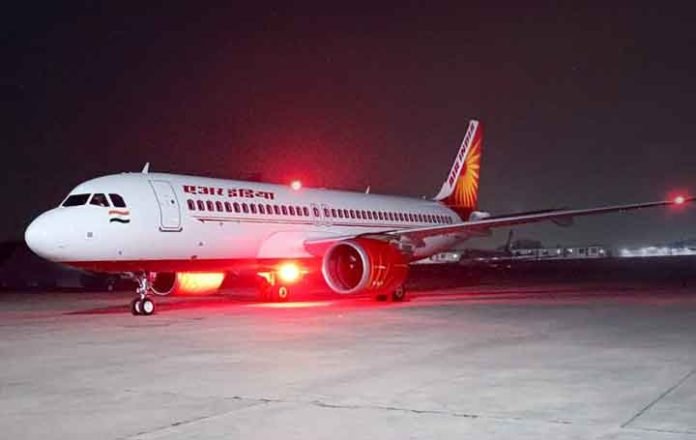Discover how Vistara’s Voluntary Retirement Scheme (VRS) and Voluntary Separation Scheme (VSS) are offering relief to non-flying staff as Vistara and Air India prepare for their merger. Explore the details and implications of these schemes for employees.
Introduction
INVC NEWS
Mumbai : In the high-stakes world of aviation, mergers and acquisitions can send ripples through the industry, impacting everything from flight routes to employee roles. With Vistara and Air India set to merge, the aviation sector is abuzz with speculation and anticipation. As the two giants prepare for their union, Vistara has rolled out a significant initiative aimed at providing relief to its non-flying staff. This initiative, comprised of the Voluntary Retirement Scheme (VRS) and Voluntary Separation Scheme (VSS), comes as a crucial support measure for employees who aren’t directly involved in flight operations.
In this article, we’ll delve into the details of Vistara’s VRS scheme and VSS, explore their implications for the non-flying workforce, and look at what this means in the broader context of the Vistara-Air India merger.
The Vistara-Air India Merger: What We Know So Far
A New Era for Indian Aviation
The impending merger between Vistara and Air India marks a significant shift in the Indian aviation landscape. With the merger, Vistara and Air India will operate as a combined entity, blending their resources and expertise to create a stronger competitive force in the industry. The exact date for this merger remains undisclosed, but preparations are in full swing.
Why the VRS and VSS Schemes?
As part of this transition, Vistara is offering the VRS and VSS schemes to its non-flying staff. These schemes are designed to ease the restructuring process and provide a cushion for employees affected by the changes.
Understanding Vistara’s Voluntary Retirement Scheme (VRS)
What is VRS?
The Voluntary Retirement Scheme (VRS) is an initiative allowing employees to retire voluntarily before the standard retirement age. This scheme is beneficial for those who have completed a significant tenure with the company and are looking to exit with a financial package.
Key Features of Vistara’s VRS
- Eligibility: The VRS is available to non-flying permanent employees who have completed at least five years of service with Vistara.
- Application Deadline: Employees interested in the VRS must submit their applications by August 23.
- Benefits: The scheme typically includes a severance package, which may consist of a lump sum payment, retirement benefits, and other perks based on years of service and company policies.
The Impact on Employees
For those who’ve dedicated a considerable part of their career to Vistara, this scheme offers a dignified exit with financial security. It also helps the airline manage its workforce more efficiently as the merger approaches.
Exploring Vistara’s Voluntary Separation Scheme (VSS)
What is VSS?
The Voluntary Separation Scheme (VSS) provides an option for employees who haven’t yet reached five years of service but wish to leave the company voluntarily. This scheme is akin to VRS but tailored for shorter tenures.
Key Features of Vistara’s VSS
- Eligibility: Available to non-flying employees who have not yet completed five years of service with the airline.
- Application Deadline: Like the VRS, employees must apply by August 23 to be considered.
- Benefits: The VSS includes a severance package, which is usually proportional to the employee’s time with the company. It also aims to provide a smoother transition for those who wish to explore other opportunities.
The Impact on Employees
The VSS provides an alternative for those who might not have the tenure required for VRS but still seek a voluntary exit. It helps employees who might be considering a career change or facing uncertainties due to the merger.
Comparing Vistara’s Schemes with Air India’s
Air India’s Similar Initiatives
Earlier this month, Air India introduced similar schemes for its non-flying staff. The VRS was available to employees with at least five years of service, while the VSS was designed for those with shorter tenures. These schemes were introduced to streamline workforce management in light of the merger with Vistara.
Aligning with Industry Practices
Both Vistara and Air India’s initiatives reflect a broader trend in the industry where airlines use such schemes to manage workforce transitions during mergers or significant restructuring. This approach helps mitigate the impact on employees and ensures smoother integration.
The Vistara’s VRS and VSS schemes are pivotal in navigating the complexities of the upcoming merger with Air India. These schemes offer a structured path for non-flying employees to transition smoothly, providing financial support and easing the impact of the organizational changes. While the exact date of the merger remains under wraps, the introduction of these schemes underscores a thoughtful approach to managing workforce changes during this transformative period.
As Vistara and Air India move forward into this new chapter, the VRS and VSS initiatives represent more than just financial packages—they are a reflection of the airlines’ commitment to their employees during a time of significant change. Whether you’re a seasoned employee considering retirement or someone looking for a fresh start, these schemes offer valuable options in a dynamic and evolving industry.














